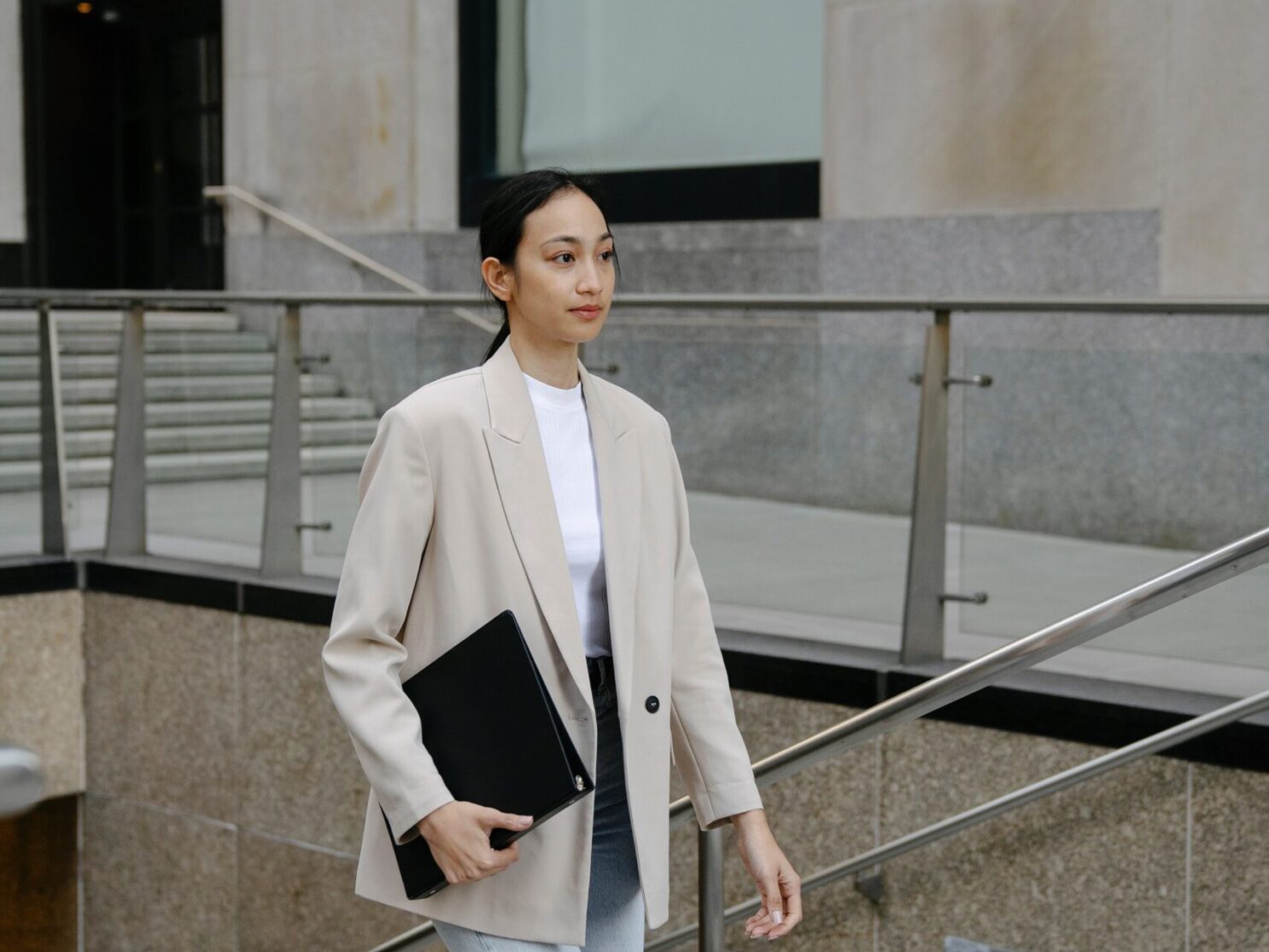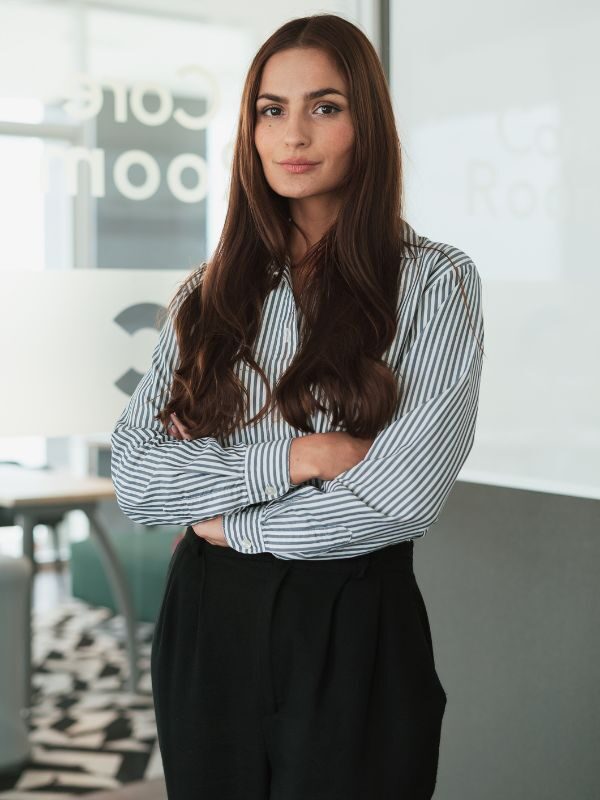
There’s an abundance of evidence which suggests that our tolerance for strict, limiting dress codes is fading. Today, celebrities are frequently spotted walking down red carpets in sneakers as opposed to staggering stilettos and brides are seen taking their vows in pant suits instead of heavy, ornate lehengas. However, when it comes to workplaces, it’s difficult to determine whether the room for sartorial experiments is as wide. Can getting creative with workwear adversely impact one’s productivity and professionalism? To find out, we reached out to members of Gen Z–the generation that’s commonly credited for dissolving the divide between professional and everyday attire–as well as names that sit at the helm of labels which cater to different definitions of workwear, and asked them to weigh in.
They are here
to stay
“In my current role as a trader, stock market trainer and public speaker, I understand the significance of a formal outfit. It is reflective of one’s professionalism”
- Hetvi Kamdar, Co-Founder, Trading Secrets

When 22-year-old Hetvi Kamdar switched from marketing to finance, the contents of her workwear wardrobe changed drastically. “The marketing agency that I worked at followed a “dress as you like” policy, and that was liberating at the time. But, in my current role as a trader, stock market trainer and public speaker, I understand the significance of a formal outfit. It is reflective of one’s professionalism,” says Kamdar who now tends to veer towards tailored separates–blazers, shirts and trousers–and dainty jewellery for work.
Apart from exuding professionalism, a dress code is also preferred because it boosts productivity. During his tenure as the president of the United States, Barack Obama was known to primarily wear blue and grey suits. Having a uniform of sorts in place allowed him to divert the time and energy he would have spent deciding what to wear daily towards other tasks on his extensive to-do list. The bestselling styles at homegrown labels prove that, much like Obama, several individuals see the merit in sticking to easy-to-repeat classics for work. At the Bombay Shirt Company, for instance, varied iterations of the white button-down are always in demand. “Other popular choices, when it comes to workwear, include checked shirts, formal pants, chinos, knit pants and styles from our low-maintenance wrinkle-free range. However, people do want to express their individuality, and they’ve been opting for micro prints or a pop of colour to subtly stand out,” explains Akshay Narvekar, founder of the Mumbai-based label.
Udit Toshniwal, creative director and co-founder of The Pant Project, a label that’s known for its custom-made bottoms, has made similar observations. He finds that the casual bottoms which cemented their presence in our closets during the pandemic are now being replaced by formal trousers. “Currently, one of our bestsellers is the formal bundle. If you buy two formal pants, you get a special value-added deal. I’ve noticed that, for Gen Z in particular, such styles serve as a blank canvas to which they then add statement accessories,” says Toshniwal, highlighting that many young individuals, especially those whose careers call for sharp, polished pieces, choose to put a personal spin on their professional attire with attention-grabbing add-ons.
Hetvi Kamdar | Co-Founder, Trading Secrets
Akshay Narvekar | Founder, Bombay Shirt Company
Udit Toshniwal | Co-Founder, The Pant Project
They are on their way out
“People are becoming more aware of their personal style. They are experimenting and wearing pieces that reflect their personality at work”
- Bhumika Ahluwalia, Co-Founder, Mishé

Some think meticulously piecing together a look every morning is cumbersome; others find it exciting. Stylist Vedica Vora firmly falls in the latter category. She finds that the process not only gets her creative juices flowing but also fuels her confidence. “People are far happier and more at ease if they are allowed to dress like themselves. I remember feeling horribly uncomfortable in school when I had to wear a uniform that just wasn’t me. This affected my confidence in a pretty big way,” says Vora, explaining how the one-size-fits-all-approach which lies at the core of most workplace dress codes can be problematic for some.
Diya Aggarwal, a 24-year-old who recently launched her own swimwear label Vitamin Di, mirrors this sentiment. “I don’t think formal clothes increase your productivity at work. Instead, they inhibit self-expression. An outfit that feels authentic to you can make you feel more confident and help you perform better in a professional setting,” she says. While Vora’s workwear staples include everything from breezy maxi dresses to jeans teamed with shirts borrowed from her father’s closet, Aggarwal’s attire for a busy day at work is made of black leggings, tank tops, blazers and sneakers. Although different at first sight, the approach that both Gen Z-ers adopt towards workwear proves that pandemic-born style genres such as biz-leisure–a trend which deftly merges comfortable clothing with power pieces–are here to stay. Look up the term and your screen will quickly fill up with images of structured outwear atop slouchy joggers and cosy sweaters paired with A-line skirts.
Bhumika Ahluwalia, co-founder of Mishé, a conscious label which stocks suits that are far from business as usual, attests that this willingness to experiment with one’s workwear is slowly but steadily increasing. “I think workwear will always be around but now people are becoming more aware of their personal style. They are experimenting and wearing pieces that reflect their personality at work,” she says.
Vedica Vora | Fashion Stylist
Diya Aggarwal | Founder, Vitamin Di
Bhumika Ahluwalia | Co-Founder, Mishé
Conclusion
In summary, while Gen Z-ers with creative careers are undoubtedly disrupting workplace dress codes, many others still prefer a more conventional approach. The two distinct schools of thought, however, are united by a shared eagerness to add a personal touch to workwear. This can be as simple as incorporating a statement accessory or as dramatic as forging a partnership between two pieces that wouldn’t have previously been paired together.
Where do you stand when it comes to dress codes at work?
We’d love to know your thoughts, leave us a comment below.